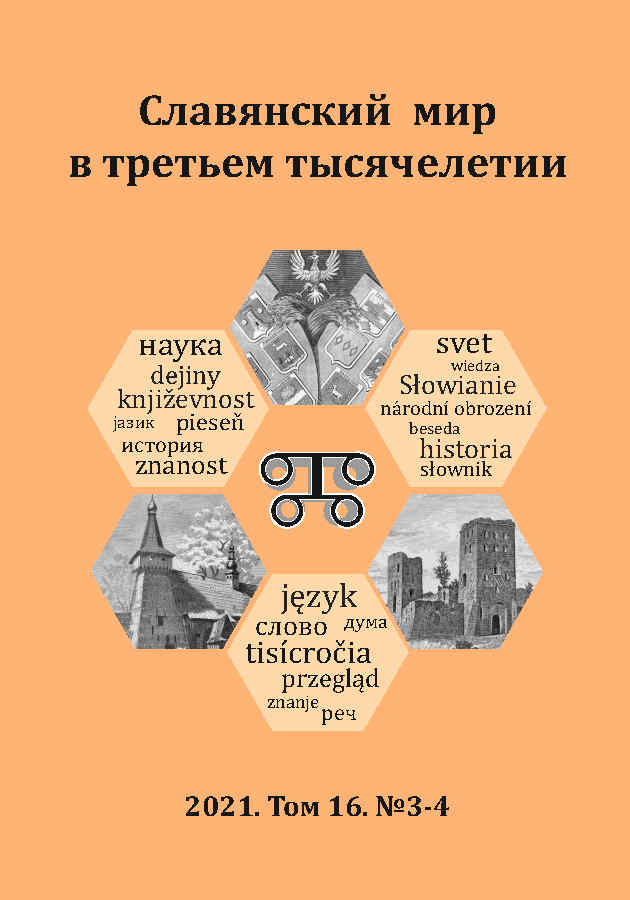The Supine in Czech Biblical Translations of the National Revival Period (Second Half of the Nineteenth Century)
DOI:
https://doi.org/10.31168/2412-6446.2021.16.3-4.05Keywords:
Supine, Czech Bible, F. Sušil, F. Novotný, N. P. Apraksin, I. A. Frencl, J. N. F. Desolda, F. F. ProcházkaAbstract
The paper deals with the use of the supine in the Catholic biblical translations of the Czech National Revival as a means to archaise the high biblical style. The usage of the supine in the New Testament translations by F. Novotný, F. Sušil, and N. P. Apraksin is analysed, as well as in the Bible edited by F. F. Procházka in 1804 and the Bible edited by I. A. Frencl and J. N. F. Desolda in 1864. The highest concentration of supine forms are in the Bible by Frencl-Desolda and in the New Testament by Sušil. In the latest edition, the supine is contained in the biblical text, but not in the interpretation. These two texts are united by the translation and linguistic strategy of their editors; were prepared for the anniversary of the Moravian mission; appeal to the common Slavic Cyril and Methodian legacy; and rely on a wide range of sources, including not only the Vulgate, but also Greek, Hebrew, and Old Czech texts, as well as Church Slavonic. The use of the supine in these texts does not depend on Church Slavonic but is inspired by Old Czech translations and the stylistic preferences of the Catholic translators and editors of the second half of the nineteenth century. The supine, similar to Old Czech forms, is one of the features of the emerging functional style of the Czech literary language – biblical or Holy Scripture style – which throughout the nineteenth century was the object of experimental linguistic normalisation.



